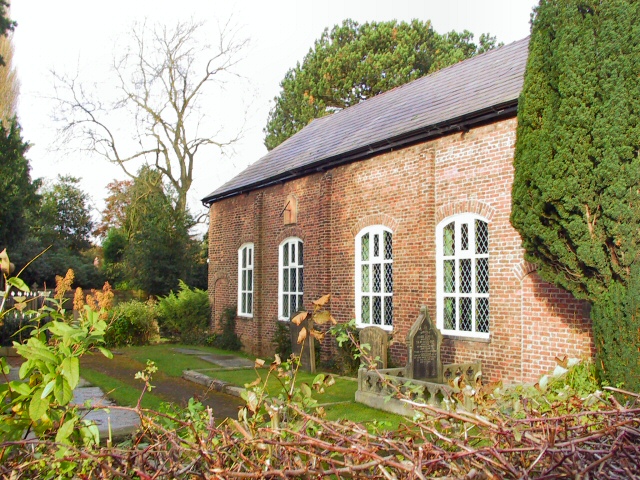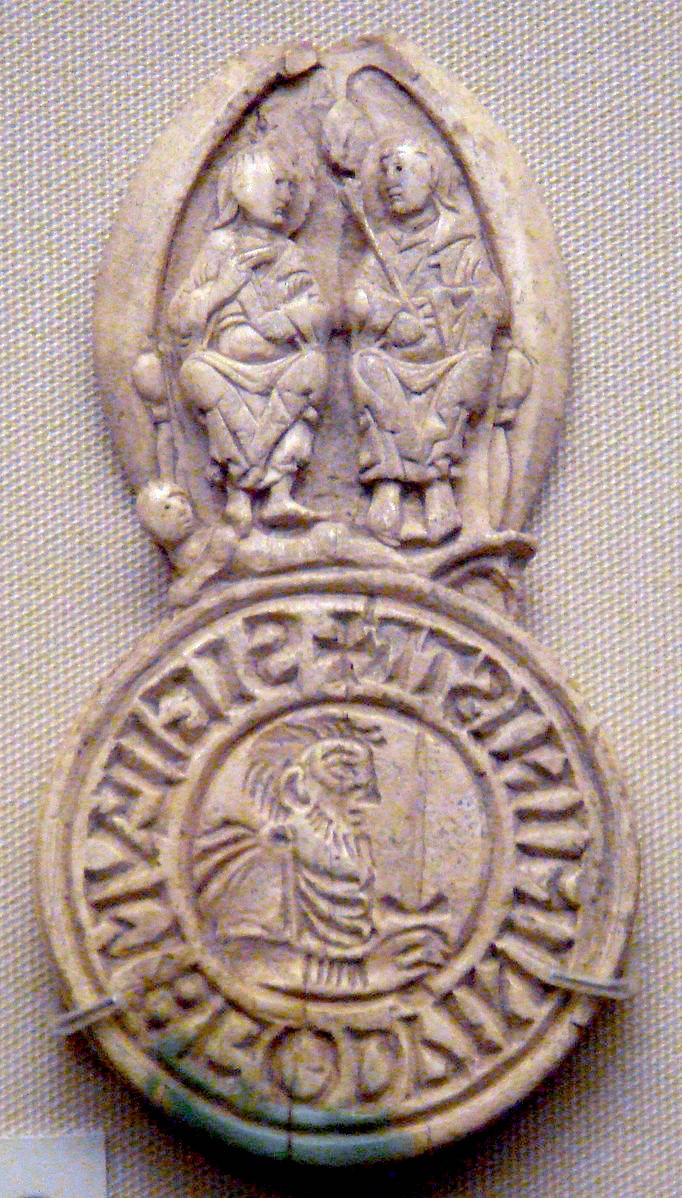|
Halebarns
Hale Barns is a village near Altrincham in Greater Manchester, England, south-west of Manchester city centre, 2 miles west of Manchester Airport and close to the River Bollin. At the 2011 census, the village had a population of 9,736. Medieval Hale Barns was an outlying area of the township of Hale, but a growth in prosperity led to it becoming a separate settlement. The village gets its name from the tithe barn that used to stand there. Before the industrial revolution, Hale Barns was an agricultural village, but since then evolved into a commuter settlement. St Ambrose College Roman Catholic boys' grammar school is in Hale Barns and the village is also home to Ringway golf club. Cotteril Clough in Hale Barns is an ancient and diverse woodland and a Site of Special Scientific Interest. Hale Barns, along with neighbouring Hale and Bowdon, is one of the wealthiest areas in the United Kingdom outside London. History What were thought to be fragments of Roman pottery tiles were ... [...More Info...] [...Related Items...] OR: [Wikipedia] [Google] [Baidu] |
United Kingdom Census 2011
A Census in the United Kingdom, census of the population of the United Kingdom is taken every ten years. The 2011 census was held in all countries of the UK on 27 March 2011. It was the first UK census which could be completed online via the Internet. The Office for National Statistics (ONS) is responsible for the census in England and Wales, the General Register Office for Scotland (GROS) is responsible for the census in Scotland, and the Northern Ireland Statistics and Research Agency (NISRA) is responsible for the census in Northern Ireland. The Office for National Statistics is the executive office of the UK Statistics Authority, a non-ministerial department formed in 2008 and which reports directly to Parliament. ONS is the UK Government's single largest statistical producer of independent statistics on the UK's economy and society, used to assist the planning and allocation of resources, policy-making and decision-making. ONS designs, manages and runs the census in England an ... [...More Info...] [...Related Items...] OR: [Wikipedia] [Google] [Baidu] |
Thegn
In Anglo-Saxon England, thegns were aristocratic landowners of the second rank, below the ealdormen who governed large areas of England. The term was also used in early medieval Scandinavia for a class of retainers. In medieval Scotland, there were local officials known as thanes. Etymology The Old English (, "man, attendant, retainer") is cognate with Old High German and Old Norse ("thane, franklin, freeman, man"). The thegn had a military significance, and its usual Latin translation was , meaning soldier, although was often used. ''An Anglo-Saxon Dictionary'' describes a thegn as "one engaged in a king's or a queen's service, whether in the household or in the country". It adds: "the word ... seems gradually to acquire a technical meaning, ... denoting a class, containing several degrees", but what remained consistent throughout was its association with military service. Origins The precursor of thegn was the ''gesith'', the companion of the king or great lord, ... [...More Info...] [...Related Items...] OR: [Wikipedia] [Google] [Baidu] |
Timber Framing
Timber framing (german: Holzfachwerk) and "post-and-beam" construction are traditional methods of building with heavy timbers, creating structures using squared-off and carefully fitted and joined timbers with joints secured by large wooden pegs. If the structural frame of load-bearing timber is left exposed on the exterior of the building it may be referred to as half-timbered, and in many cases the infill between timbers will be used for decorative effect. The country most known for this kind of architecture is Germany, where timber-framed houses are spread all over the country. The method comes from working directly from logs and trees rather than pre-cut dimensional lumber. Hewing this with broadaxes, adzes, and draw knives and using hand-powered braces and augers (brace and bit) and other woodworking tools, artisans or framers could gradually assemble a building. Since this building method has been used for thousands of years in many parts of the world, many styles ... [...More Info...] [...Related Items...] OR: [Wikipedia] [Google] [Baidu] |
Unitarianism
Unitarianism (from Latin ''unitas'' "unity, oneness", from ''unus'' "one") is a nontrinitarian branch of Christian theology. Most other branches of Christianity and the major Churches accept the doctrine of the Trinity which states that there is one God who exists in three coequal, coeternal, consubstantial divine persons: God the Father, God the Son (Jesus in Christianity, Jesus Christ) and Holy Spirit in Christianity, God the Holy Spirit. Unitarian Christians believe that Jesus was Divine_inspiration, inspired by God in his moral teachings and that he is a Redeemer (Christianity), savior, but not God himself. Unitarianism was established in order to restore "History of Christianity#Early Christianity (c. 31/33–324), primitive Christianity before [what Unitarians saw as] later corruptions setting in"; Unitarians generally reject the doctrine of original sin. The churchmanship of Unitarianism may include liberal denominations or Unitarian Christian denominations that are mo ... [...More Info...] [...Related Items...] OR: [Wikipedia] [Google] [Baidu] |
Listed Building
In the United Kingdom, a listed building or listed structure is one that has been placed on one of the four statutory lists maintained by Historic England in England, Historic Environment Scotland in Scotland, in Wales, and the Northern Ireland Environment Agency in Northern Ireland. The term has also been used in the Republic of Ireland, where buildings are protected under the Planning and Development Act 2000. The statutory term in Ireland is " protected structure". A listed building may not be demolished, extended, or altered without special permission from the local planning authority, which typically consults the relevant central government agency, particularly for significant alterations to the more notable listed buildings. In England and Wales, a national amenity society must be notified of any work to a listed building which involves any element of demolition. Exemption from secular listed building control is provided for some buildings in current use for worship, ... [...More Info...] [...Related Items...] OR: [Wikipedia] [Google] [Baidu] |
Nonconformist (Protestantism)
In English church history, the Nonconformists, also known as a Free Church person, are Protestant Christians who did not "conform" to the governance and usages of the established church, the Church of England (Anglican Church). Use of the term in England was precipitated after the Restoration of the Stuart monarchy in 1660, when the Act of Uniformity 1662 renewed opposition to reforms within the established church. By the late 19th century the term specifically included other Reformed Christians ( Presbyterians and Congregationalists), plus the Baptists, Brethren, Methodists, and Quakers. The English Dissenters such as the Puritans who violated the Act of Uniformity 1559 – typically by practising radical, sometimes separatist, dissent – were retrospectively labelled as Nonconformists. By law and social custom, Nonconformists were restricted from many spheres of public life – not least, from access to public office, civil service careers, or degrees at university � ... [...More Info...] [...Related Items...] OR: [Wikipedia] [Google] [Baidu] |
Hale Chapel
Hale Chapel is a Unitarian Unitarian or Unitarianism may refer to: Christian and Christian-derived theologies A Unitarian is a follower of, or a member of an organisation that follows, any of several theologies referred to as Unitarianism: * Unitarianism (1565–present ... chapel in Hale Barns, Greater Manchester (). The chapel was built in 1723 and was originally a Presbyterian meeting house. A vestry was added c1880 and around the same time alterations were made to the rest of the building. The chapel features an 18th-century pulpit and 19th century stained glass. Hale Chapel is the earliest place of worship in either Hale or Hale Barns. See also Listed buildings in Hale, Greater Manchester * Grade II* listed buildings in Greater Manchester * Listed buildings in Hale, Greater Manchester *www.halechapel.co.uk References Churches completed in 1723 Grade II* listed buildings in Greater Manchester Churches in Trafford 1723 establishments in England Unitarian cha ... [...More Info...] [...Related Items...] OR: [Wikipedia] [Google] [Baidu] |
Hale Chapel - Geograph
Hale may refer to: Places Australia *Hale, Northern Territory, a locality * Hale River, in southeastern Northern Territory Canada * Hale, Ontario, in Algoma District United Kingdom *Hale, Cumbria, a hamlet near Beetham, Cumbria * Hale, Greater Manchester, a village in the Metropolitan Borough of Trafford, Greater Manchester ** Hale (Trafford ward), a former electoral ward in the Metropolitan Borough of Trafford, Greater Manchester * Hale, Halton, a village in Halton, Cheshire **Hale, an electoral ward in the Borough of Halton, Cheshire * Hale, Hampshire, a village in the New Forest * Hale, Surrey, a village near Farnham *Great Hale, a village in the North Kesteven district of Lincolnshire *Little Hale, a hamlet in the North Kesteven district of Lincolnshire *Tottenham Hale, a district in the London Borough of Haringey * The Hale, an area of the London Borough of Barnet **Hale, an electoral ward in the London Borough of Barnet *The Hale, Buckinghamshire, a hamlet near Wendover U ... [...More Info...] [...Related Items...] OR: [Wikipedia] [Google] [Baidu] |



